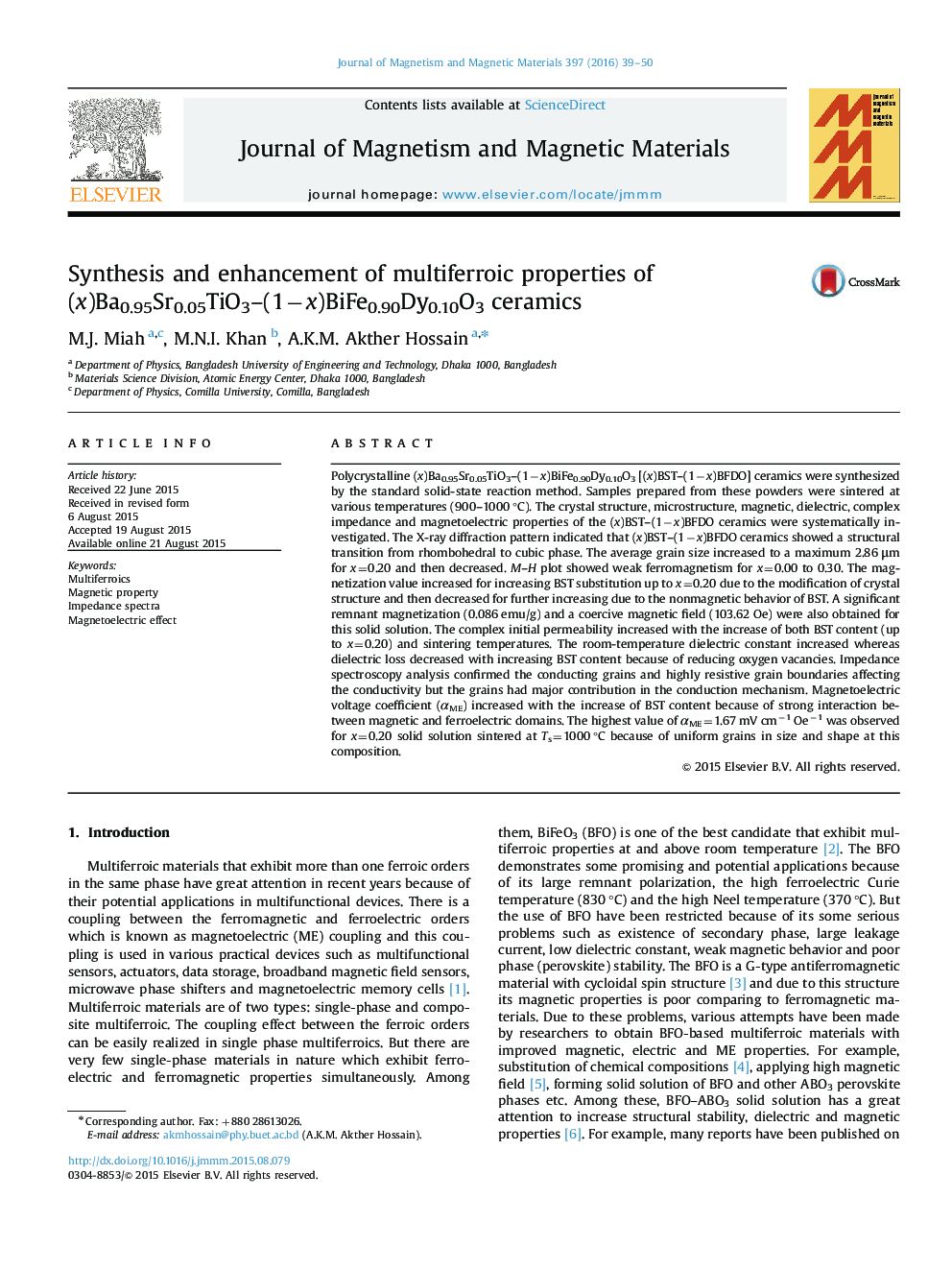| Article ID | Journal | Published Year | Pages | File Type |
|---|---|---|---|---|
| 1798745 | Journal of Magnetism and Magnetic Materials | 2016 | 12 Pages |
•(x)BST–(1−x)BFDO ceramics transformed from rhombohedral to cubic with increasing x.•Magnetization results support the structural transition of (x)BST–(1−x)BFDO.•Only grains have contribution in conduction mechanism in various (x)BST–(1−x)BFDO.•Rg increases with increasing BST addition at RT and decreases with increasing Ts.•The optimal value of αME=1.67 mV cm−1 Oe−1 was observed for x=0.20 at Ts=1000 °C.
Polycrystalline (x)Ba0.95Sr0.05TiO3–(1−x)BiFe0.90Dy0.10O3 [(x)BST–(1−x)BFDO] ceramics were synthesized by the standard solid-state reaction method. Samples prepared from these powders were sintered at various temperatures (900–1000 °C). The crystal structure, microstructure, magnetic, dielectric, complex impedance and magnetoelectric properties of the (x)BST–(1−x)BFDO ceramics were systematically investigated. The X-ray diffraction pattern indicated that (x)BST–(1−x)BFDO ceramics showed a structural transition from rhombohedral to cubic phase. The average grain size increased to a maximum 2.86 μm for x=0.20 and then decreased. M–H plot showed weak ferromagnetism for x=0.00 to 0.30. The magnetization value increased for increasing BST substitution up to x=0.20 due to the modification of crystal structure and then decreased for further increasing due to the nonmagnetic behavior of BST. A significant remnant magnetization (0.086 emu/g) and a coercive magnetic field (103.62 Oe) were also obtained for this solid solution. The complex initial permeability increased with the increase of both BST content (up to x=0.20) and sintering temperatures. The room-temperature dielectric constant increased whereas dielectric loss decreased with increasing BST content because of reducing oxygen vacancies. Impedance spectroscopy analysis confirmed the conducting grains and highly resistive grain boundaries affecting the conductivity but the grains had major contribution in the conduction mechanism. Magnetoelectric voltage coefficient (αME) increased with the increase of BST content because of strong interaction between magnetic and ferroelectric domains. The highest value of αME=1.67 mV cm−1 Oe−1 was observed for x=0.20 solid solution sintered at Ts=1000 °C because of uniform grains in size and shape at this composition.
